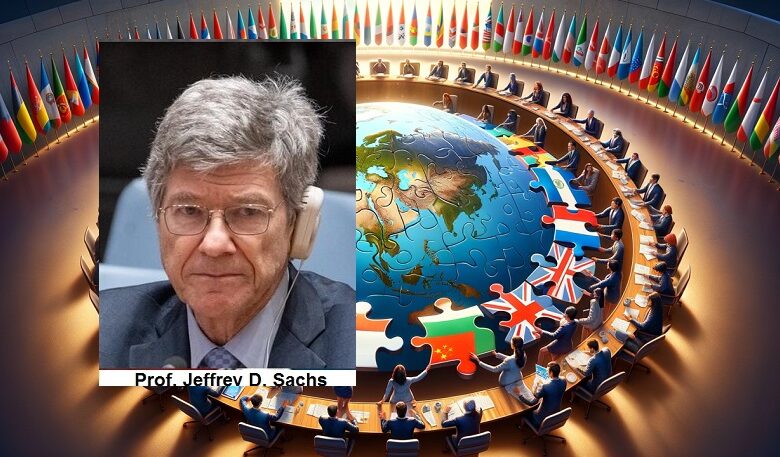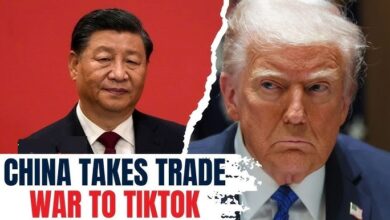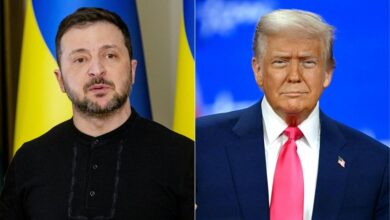Achieving peace in the new multipolar age
In short, while US deludes itself that it remains the world’s hegemon, we are already in a multipolar world. This raises the question of what the new multipolarity should mean. There are three possibilities.

By Prof.Jeffrey Sachs /August 9, 2024
With the demise of the Soviet Union in 1991, the US assumed that it would dominate the world as the unrivalled hegemon. Yet the US “unipolar” moment proved to be short-lived. US geopolitical dominance ended with the rise of China, the recovery of Russia from the period of Soviet collapse, and the rapid development of India. We have arrived at a new multipolar age.
The US still fights to remain world hegemon, but this is delusional and doomed to fail. The US is in no position to lead the world, even if the rest of the world were to want it, which is not the case. The US share of world output (at international prices) is 16% and declining, down from around 27% in 1950, and 21% in 1980. China’s share is 19%. China’s manufacturing output is roughly twice that of the US, and China rivals the US in cutting-edge technologies.
The US is also militarily overextended, with some 750 overseas military bases in 80 countries. The US is engaged in protracted wars in Yemen, Israel-Palestine, Ukraine, Syria, Libya, and elsewhere. The US wars and quest for hegemony are financed through debt, including debt owed to rival powers such as China.
Moreover, America’s budget politics is paralyzed. The rich, who fund the political campaigns, want lower taxes, while the poor want more social outlays. The result is a standoff, with chronic budget deficits (now above 5% of GDP). The public debt has swelled from around 35% of GDP in 2000 to 100% of GDP today.
The US sustains technological dynamism in areas such as artificial intelligence and microchip design, yet US breakthroughs are quickly matched in China through the spread of knowhow and advances pioneered by China. Most of the world’s green and digital hardware — including advanced solar modules, wind turbines, nuclear power plants, batteries, chips, electric vehicles, 5G systems, and long-distance power transmission – is manufactured in Asia, with a large share in China or Chinese-dominated supply chains.
In view of its budget deficits, the US shirks the financial burdens of global leadership. The US demands that NATO allies pay their own way for military defense, while the US is increasingly stingy in its contributions to UN system for climate and development finance.
In short, while US deludes itself that it remains the world’s hegemon, we are already in a multipolar world. This raises the question of what the new multipolarity should mean. There are three possibilities.
The first, our current trajectory, is a continued struggle for dominance among the major powers, pitting the US against China, Russia, and others. The leading US foreign policy scholar, Professor John Mearsheimer, has put forward the theory of “offensive realism,” according to which the great powers inevitably struggle for dominance, yet the consequences can be tragic, in the form of devastating wars. Surely our task is to avoid such tragic outcomes, not accept them as a matter of fate.
The second possibility is a precarious peace through a balance of power among the great powers, sometimes called “defensive realism.” Since the US cannot defeat China or Russia, and vice versa, the great powers should keep the peace by avoiding direct conflicts amongst themselves. The US should not try to push NATO into Ukraine, against Russia’s strenuous objections, nor should the US arm Taiwan over China’s vociferous opposition.
In short, the great powers should act with prudence, avoiding each other’s red lines. This is surely good advice, but not enough. Balances of power turn into imbalances, threatening the peace. The Concert of Europe, the balance of power among the major European powers in the 19th century, eventually succumbed to shifts in the power balance at the end of the 19th century, which led onward to World War I.
The third possibility, scorned in the past 30 years by US leaders, but our greatest hope, is true peace among the major powers. This peace would be based on the shared recognition that there can be no global hegemon and that the common good requires active cooperation among the major powers. There are several bases of this approach, including idealism (a world based on ethics), and institutionalism (a world based on international law and multilateral institutions).
Sustained peace is possible. We can learn much from the long peace that prevailed in East Asia before the arrival of Western powers in the 19th century. In her book Chinese Cosmopolitanism, philosopher Shuchen Xiang cites historian David Kang, who noted that “from the founding of the Ming dynasty to the opium wars – that is, from 1368 to 1841 – there were only two wars between China, Korea, Vietnam, and Japan. These were the China’s invasion of Vietnam (1407-1428) and Japan’s invasion of Korea (1592-1598).” East Asia’s long peace was shattered by Britain’s attack on China in the First Opium War, 1839-1842, and the East-West (and later Sino-Japanese) conflicts that followed.
Prof. Xiang attributes the half-millennium of East Asian peace to Confucian norms of harmony that underpinned the statecraft among China, Korea, Japan, and Vietnam, in contrast to the struggle for hegemony that characterized Europe’s statecraft. China, during this long period, was the region’s uncontested hegemon, but did not use its predominant power to threaten or harm Korea, Vietnam, or Japan.
Dr. Jean Dong, an expert in China’s foreign policymaking, makes similar points about the differences between Chinese and European statecraft in her book Chinese Statecraft in a Changing World: Demystifying Enduring Traditions and Dynamic Constraints.
I have recently proposed 10 Principles for Perpetual Peace in the 21st Century, building on China’s five principles for peaceful co-existence, plus five practical further steps, hence, a mixture of Confucian ethics and institutionalism. My idea is to harness the ethics of cooperation and the practical benefits of international law and the UN Charter.
As the world assembles in September at the UN Summit of the Future, the key message is this. We don’t want or need a hegemon. We don’t need a balance of power, which can too easily become an imbalance of force. We need a lasting peace built on ethics, common interests, and international law and institutions.
https://www.manilatimes.net/
Jeffrey Sachs is University Professor at Columbia University. He advised Soviet President Mikhail Gorbachev, Russian President Boris Yeltsin and Ukrainian President Leonid Kuchma.
(This Article was first Published on Prof. Jeffrey D. Sachs I August 9th,2024 | New World Economy






